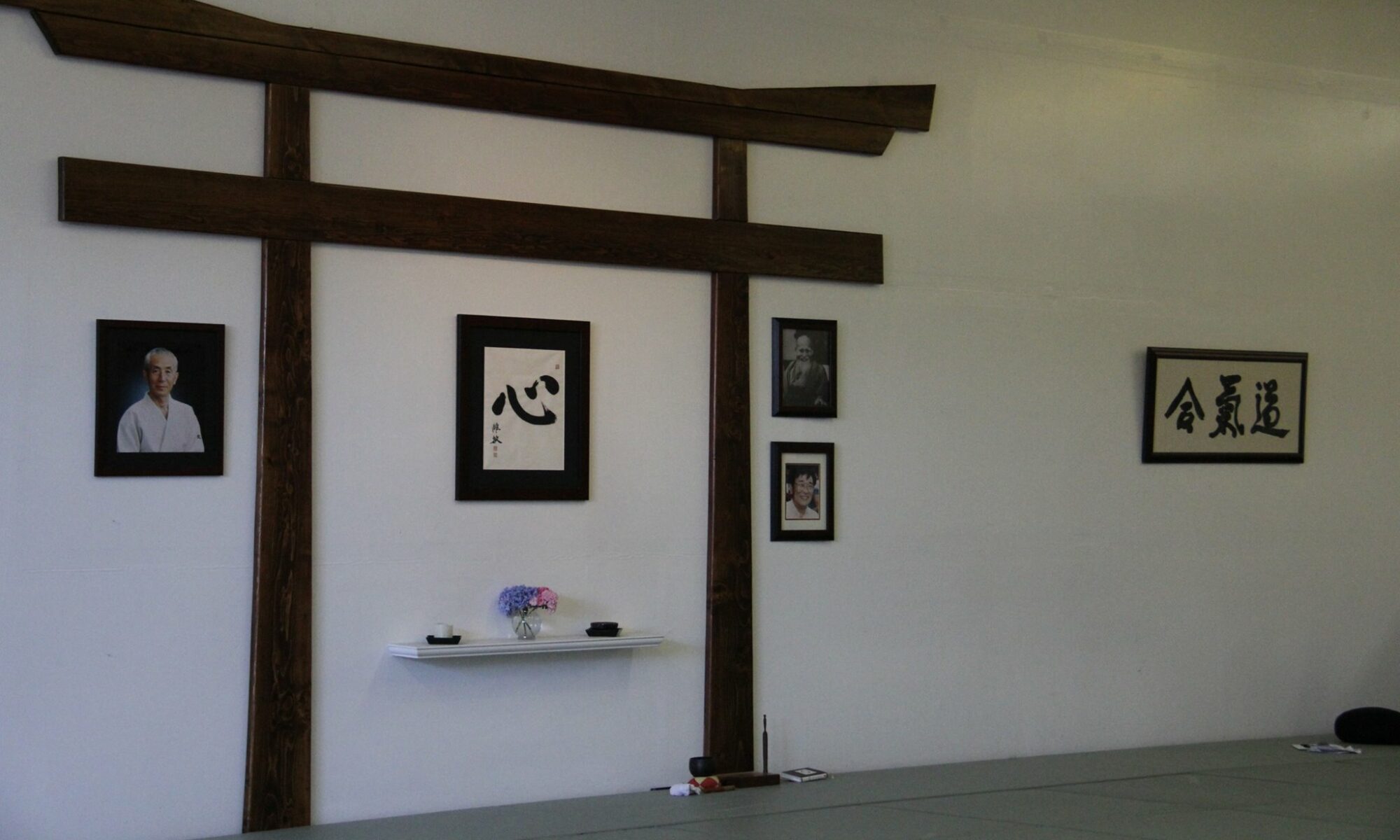We come to our dojo to train so that we’re better able to apply the principles of Aikido in our daily lives.
The nation and our Governor have talked about the importance of ‘social distancing’ so we can slow the spread of this coronavirus. I’ve noticed in my walks around the neigh- borhood that many people are applying this principle to not just physical spacing, but also mental spacing. People will avert their eyes, and not greet you even if you are across the street. Perhaps ‘social distancing’ can be reworked to be ‘physical distanc- ing, what we Aikido-ka (practitioners of Aikido) call Maai (間合) – the proper spacing with our partners, with others in the class, and with the dojo space itself.
Maai consists of two characters – Ma and Ai.
Ma (間). This Japanese kanji 間 graphically combines 門 “door” and 日 “sun.” It is a Ja- panese word which can be roughly translated as “gap,” “space,” or “pause.” In Ja- panese, ma, the word for space, suggests both physical space and time/space. It is best described as an “awareness of place,” the simultaneous awareness of form and non-form deriving from an intensification of vision” (the 180 degree vision discussed of- ten in our classes.)
合Ai – Isn’t it interesting that the word Maai includes ‘Ai,’ as in Ai-ki-do? We say that Ai represents integration, a meeting, to align with others, harmony. What a great idea for
our spatial distancing, with love and harmony for others. This is the true meaning of our practice.
How can you apply your Aikido training to this concept of ‘distancing,’ Maai? First, be centered and extend your positive energy – our Ki. Walk from your center majestically, as Maruyama Sensei has said in the second verse of his motto. And most importantly, SMILE! Make eye contact with others. They will feel your energy and positivity and will feel better, even if they don’t know what is happening. This is one way to apply your practice in daily life!
By Jim West

